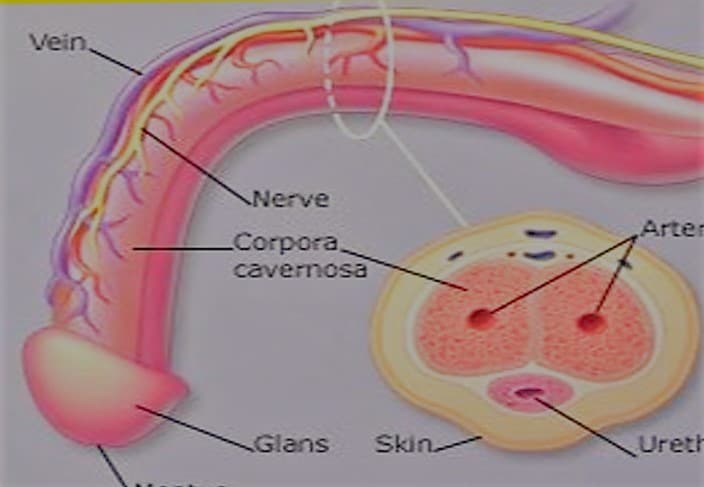
Introduction
Estrogen in men is produced mainly by aromatization of testosterone. This occurs mainly in adipose tissues in men. The conversion is regulated by the enzyme aromatase. Although there are several types of estrogen in men, estradiol is the most bioactive and widely available hormone. A small amount of estradiol is produced by the male testes. Elevated levels in males can lead to gynecomastia. Increased estradiol levels in males may be caused by increased body fat, resulting in enhanced peripheral aromatization of androgens. Levels in men can also be increased by excessive use of marijuana, alcohol, or prescribed drugs, including phenothiazines and spironolactone. Estradiol levels can also be dramatically elevated in germ cell tumors and tumors of a number of glands in both men and women.
Low estradiol in men is linked with osteoporosis & hip fractures
Most work on men with estradiol has been with risks with osteoporosis. Low serum estradiol levels in men may be associated with an increased risk for low-trauma hip fracture, and risk may be even greater for those who also have low testosterone levels, according to a study. In the study published in the American Journal of Medicine of 793 men from the National Heart, Lung, and Blood Institute’s Framingham Heart Study, the participants included in the analysis had undergone measurement of their estradiol and testosterone levels. Participants had no prior hip fracture and were followed. Estradiol levels were classified as low (2.0 – 18.1 pg/mL), medium (18.2 – 34.2 pg/mL), or high (>/= 34.3 pg/mL). The researchers also distinguished between high-trauma and low-trauma hip fractures. An example of a low-trauma fracture would be one that resulted from a fall from a standing height or less. The hazard ratio (HR) was adjusted for age, body mass index, height, and smoking status. For men in the low estradiol group relative to the high estradiol group, the HR was 3.1 (95% confidence interval [CI], 1.4 – 6.9). No difference in risk was observed for medium- vs high-level groups (HR, 0.9; 95% CI, 0.4 – 2.0). In the study, it was found that the increased risk for hip fracture exponentially changed below serum estradiol levels of roughly 20.0 pg/mL. Men were also evaluated on the basis of their testosterone levels. No difference in adjusted risk was found on the basis of testosterone levels alone. However, low testosterone levels in addition to low estradiol levels appeared to compound the risk of hip fracture (adjusted HR, 6.5; 95% CI, 2.9 – 14.3). Estradiol is increasingly recognized among researchers in bone metabolism but it is an under-recognized risk factor.
In another paper in the Annals of Internal Medicine, total testosterone, total estradiol, and luteinizing hormone were measured in participants at all four biennial examinations. Values from at least three of four examinations were averaged. Hypogonadism was defined as a mean testosterone level less than 10.4 nmol/L (<3.0 ng/mL) or a mean luteinizing hormone level of 20 IU/L or greater. An alternate definition of hypogonadism based only on a mean testosterone level less than 10.4 nmol/L (<3.0 ng/mL) was also used. Bone mineral density was measured at the proximal femur (femoral neck, Ward triangle, and trochanter) and lumbar spine by using dual-photon absorptiometry and at the radial shaft by using single-photon absorptiometry. The association of hypogonadism with bone mineral density was examined with adjustment for confounders, including estradiol levels. A similar model that adjusted for hypogonadism was used to examine the association of estradiol level (ranked as quartiles) with bone mineral density. Of 448 men with bone mineral density measurements, 405 had evaluable hormone levels (mean age, 75.7 years [range, 68 to 96 years]); 71 (17.5%) of the 405 men were hypogonadal. Bone mineral density at any site did not significantly differ in hypogonadal men compared with eugonadal men (for example, bone mineral density at the femoral neck was 0.89 g/cm2 vs. 0.87 g/cm2, respectively; P > 0.2), even when alternate definitions of hypogonadism were used. In contrast, compared with the lowest estradiol quartile, men with higher estradiol levels had greater mean bone mineral density at all sites (for example, bone mineral density at the femoral neck was 0.84 g/cm2, 0.88 g/cm2, 0.86 g/cm2, and 0.91 g/cm2 from the lowest to the highest estradiol quartile; P for trend = 0.002).The difference in mean bone mineral density between men in thelowest and those in the highest estradiol quartile levels wassimilar to the effect of 10 years of aging on bone mineral density.In elderly men, hypogonadism related to aginghas little influence on bone mineral density, but serum estradiollevels have a strong and positive association with bone mineraldensity.
If you are concerned about your testosterone and estrogen balance, we are here to help you at the OPAL Medical Clinic to concern about your testosterone in Houston . We can ascertain your estrogen level through a simple blood test. Also, we can arrange for DEXA scans to determine your risks for osteoporosis. For further information, please visit us at our website located at www.opalmedical.com


Perfect Post! Thanks For Sharing this useful blogs and I am very glad to increase my knowledge about Testosterone and
estrogen balance.i will try visit OPAL medical clinic.